Introduction:

Dulling a glossy paint finish is a common DIY project that homeowners undertake to change the appearance of their furniture, walls, or accessories. Glossy finishes can be too shiny and reflective, causing glare and unwanted attention. Dulling the finish can help tone down the shine and create a more matte or satin look. In this article, I will provide step-by-step instructions on how to dull a gloss paint finish, including the materials needed, preparation process, and troubleshooting common problems.
Understanding Gloss Paint:
Gloss paint is a type of paint that has a high sheen and reflective finish. It is often used on furniture, trim, and doors to create a shiny, polished look. However, glossy finishes can be too reflective and create glare, which is why many homeowners prefer to dull the finish. There are several methods to dull a glossy finish, including sanding, using a chemical deglosser, or changing the composition of the finish. In the following sections, I will provide detailed instructions on how to dull a gloss paint finish using these methods.
Key Takeaways
- Glossy finishes can be too shiny and reflective, causing glare and unwanted attention.
- There are several methods to dull a glossy finish, including sanding, using a chemical deglosser, or changing the composition of the finish.
- In the following sections, I will provide step-by-step instructions on how to dull a gloss paint finish, including the materials needed, preparation process, and troubleshooting common problems.
Understanding Gloss Paint
As a professional painter, I have worked with different types of paint finishes, including gloss paint. Gloss paint is a type of paint that has a high level of shine and reflects light well. It is commonly used on surfaces that require a durable and easy-to-clean finish, such as doors, trim, and cabinets.
There are different types of gloss paint finishes, including high gloss, semi-gloss, and gloss. High gloss finish has the highest level of shine, while semi-gloss finish has a moderate level of shine. Gloss finish falls between high gloss and semi-gloss finish in terms of shine.
Gloss paint finish is popular because of its durability, easy-to-clean nature, and ability to reflect light. However, it can be challenging to apply because it tends to highlight surface imperfections. As such, it requires proper preparation and application techniques to achieve a flawless finish.
When working with high-gloss finish, it is essential to ensure that the surface is smooth and free from any blemishes. Any imperfections will be highlighted by the high shine of the paint. It is also crucial to use the right tools, such as high-quality brushes and rollers, to achieve a smooth and even finish.
Overall, gloss paint is an excellent choice for surfaces that require a durable and easy-to-clean finish. However, it requires proper preparation and application techniques to achieve a flawless finish.
Materials Needed
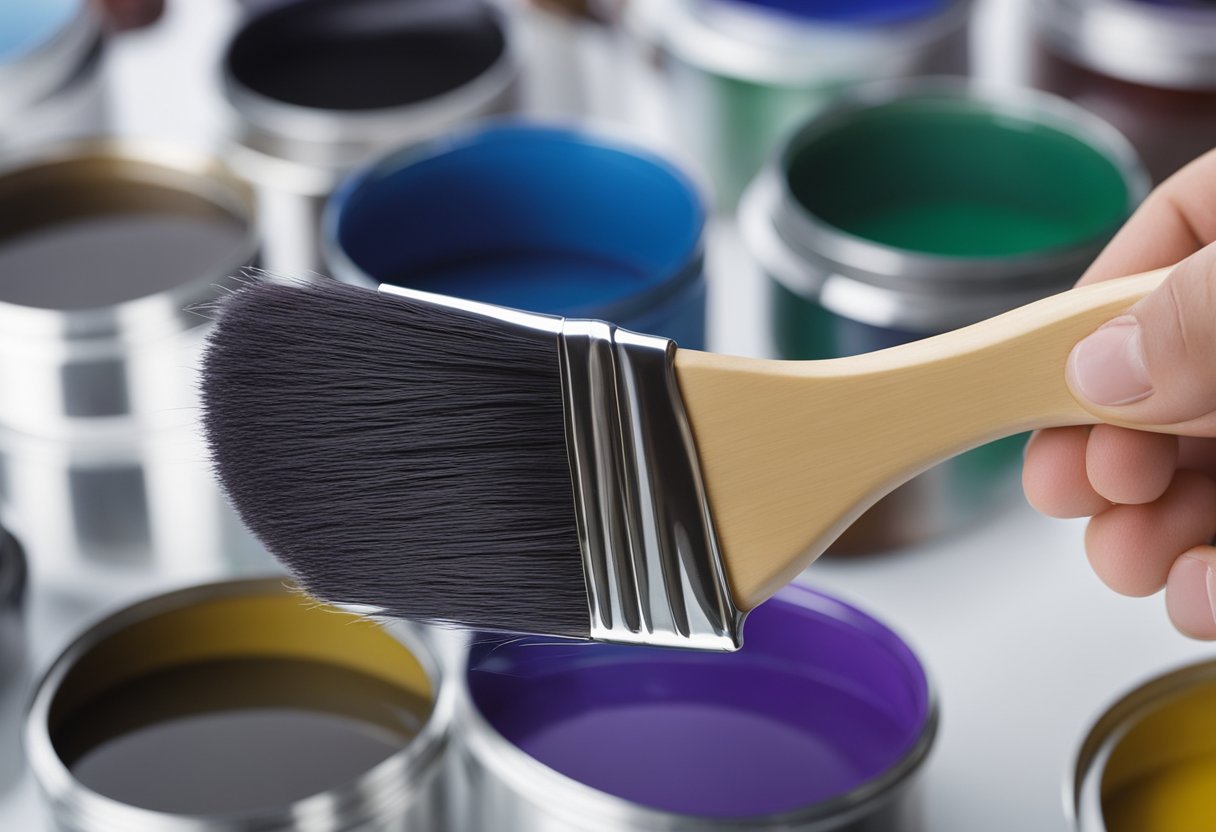
When it comes to dulling a glossy paint finish, you’ll need a few materials to get the job done. Here’s a list of items you may want to consider having on hand:
Sandpaper
Sandpaper is an essential tool for dulling a glossy finish. You’ll need sandpaper in various grits, including coarse, fine, and extra fine. If you’re working on a large surface, consider using an orbital sander to speed up the process.
Paint
Paint can be used to dull a glossy finish without sanding. You can use a flat or matte paint to achieve the desired effect. If you’re using paint, you’ll also need a paintbrush or roller.
Polyurethane, Lacquer, Wax, or Varnish
If you’re working with wood, you may want to consider using a polyurethane, lacquer, wax, or varnish to dull the finish. These products can be applied with a brush or sprayed on.
Mineral Spirits or Deglosser
Mineral spirits or deglosser can be used to clean the surface before dulling the finish. These products can help remove any dirt, grime, or grease that may be on the surface.
Polishing Compound
A polishing compound can be used to remove any remaining gloss from the surface. You can use a coarse polishing compound for heavily glossed surfaces and a fine polishing compound for lightly glossed surfaces.
Naphtha
Naphtha is a solvent that can be used to clean the surface before dulling the finish. It can also be used to thin oil-based paints and varnishes.
Sanding Blocks
Sanding blocks can be used to sand curved or hard-to-reach surfaces. You can use a sanding block with sandpaper or a polishing pad.
Microfiber Cloth
A microfiber cloth can be used to wipe down the surface after sanding or polishing. This will help remove any dust or debris that may be on the surface.
TSP or Vinegar
TSP or vinegar can be used to clean the surface before dulling the finish. These products can help remove any dirt, grime, or grease that may be on the surface.
Dust Cloths
Dust cloths can be used to wipe down the surface before and after sanding or polishing. This will help remove any dust or debris that may be on the surface.
Etching Cream
Etching cream can be used to dull the surface of glass. This product is typically used for decorative purposes.
Zinc or Talc
Zinc or talc can be added to paint to create a dull finish. These products can help absorb light and reduce the gloss of the paint.
220-Grit Sandpaper or Wet/Dry Sandpaper
220-grit sandpaper or wet/dry sandpaper can be used to dull the surface of the paint. You can use these products to sand the surface before applying a dulling agent.
Matte Varnish or Flat Paint
Matte varnish or flat paint can be used to dull the surface of the paint. These products can be applied with a brush or sprayed on.
Overall, the materials you’ll need will depend on the type of surface you’re working with and the level of gloss you’re trying to achieve. With the right tools and materials, you can easily dull a glossy finish and achieve the look you want.
Preparation Process
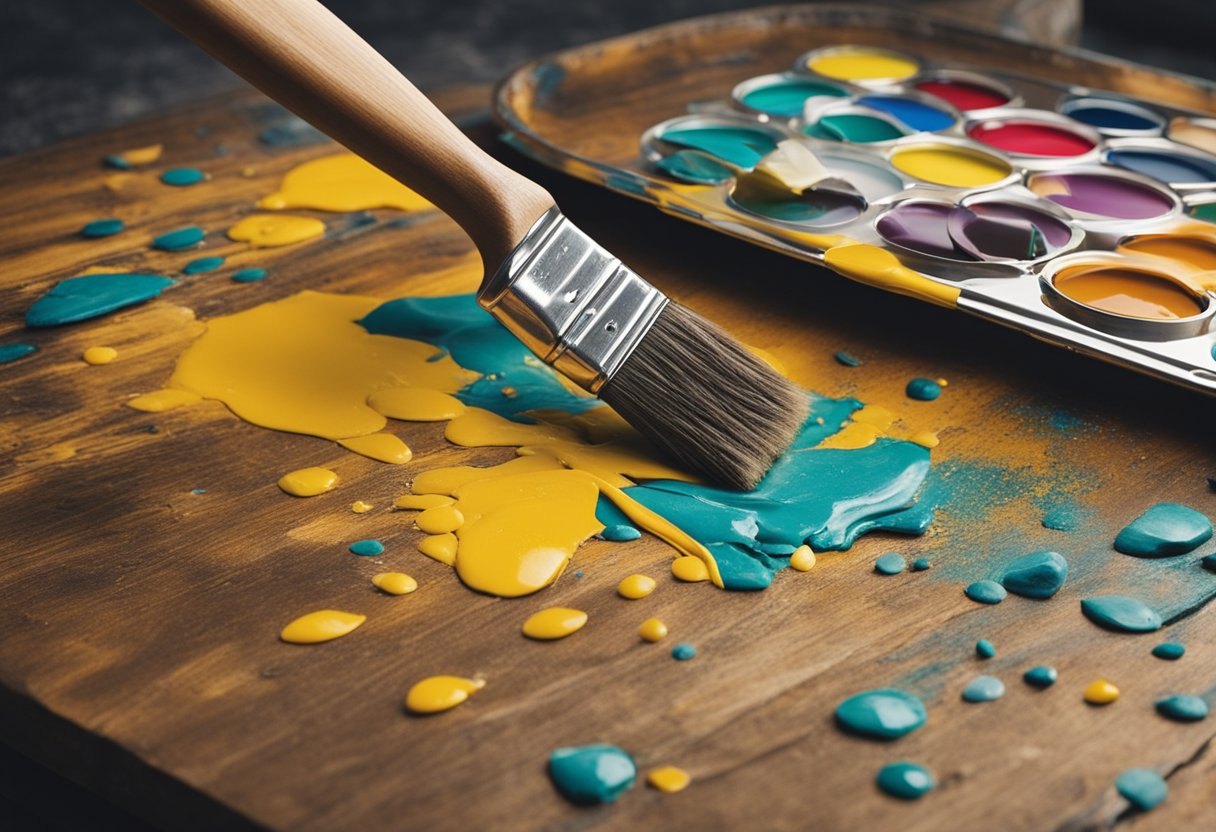
Before dulling a glossy finish, it is essential to prepare the surface properly. The following steps will help you prepare the surface for the best results:
Step 1: Clean the Surface
The first step in preparing the surface is to clean it thoroughly. Use soap and water to remove any dirt, grease, or grime. Once the surface is clean, rinse it with water and let it dry completely.
Step 2: Sand the Surface
The next step is to sand the surface. Sanding helps to roughen the surface, making it easier for the new finish to adhere. Start with a fine-grit sandpaper and sand out the gloss. Be sure to sand in the direction of the grain to avoid damaging the surface.
Step 3: Apply Varnish
Once you have sanded the surface, apply a coat of varnish. Varnish sanding helps to create a smooth surface and provides a protective layer for the new finish. Apply the varnish with a brush or roller and let it dry completely.
Step 4: Wax the Surface
After the varnish has dried, apply a coat of wax to the surface. Waxing helps to protect the surface and provides a smooth finish. Apply the wax with a clean cloth and let it dry completely.
Step 5: Refinish the Surface
If the surface has deep scratches or damage, you may need to refinish it. Refinishing involves removing the old finish and applying a new one. This process can be time-consuming and requires a lot of effort. If you are not comfortable with refinishing, consider hiring a professional.
By following these preparation steps, you can dull a glossy finish without damaging the underlying surface.
Dulling the Glossy Finish
When it comes to dulling a glossy finish, there are several methods that you can use. One of the most common methods is sanding, but this can be time-consuming and can damage the underlying surface if done improperly. Instead, consider using a chemical stripper, paint and primer, sealant, or waxing.
If you choose to use a chemical stripper, it is important to follow the manufacturer’s instructions carefully. A deglosser can also be used to dull the finish without sanding. This product is applied to the surface and left to sit for a specified amount of time before wiping it away.
Another option is to use paint and primer to dull the finish. This method involves applying a coat of primer followed by a coat of paint in the desired finish. This can be a good option for those who want to change the color of the surface as well as dull the finish.
Sealant can also be used to dull a glossy finish. This method involves applying a clear coat of sealant in a matte or satin finish over the glossy surface. This will create a new layer that will dull the shine of the original finish.
Finally, waxing is another option for dulling a glossy finish. This method involves applying a wax product to the surface and buffing it in with a soft cloth. This will create a protective layer that will also dull the shine of the original finish.
Overall, there are several methods that can be used to dull a glossy finish without sanding. Whether you choose to use a chemical stripper, paint and primer, sealant, or waxing, it is important to follow the manufacturer’s instructions carefully to achieve the best results.
Fine Tuning the Finish
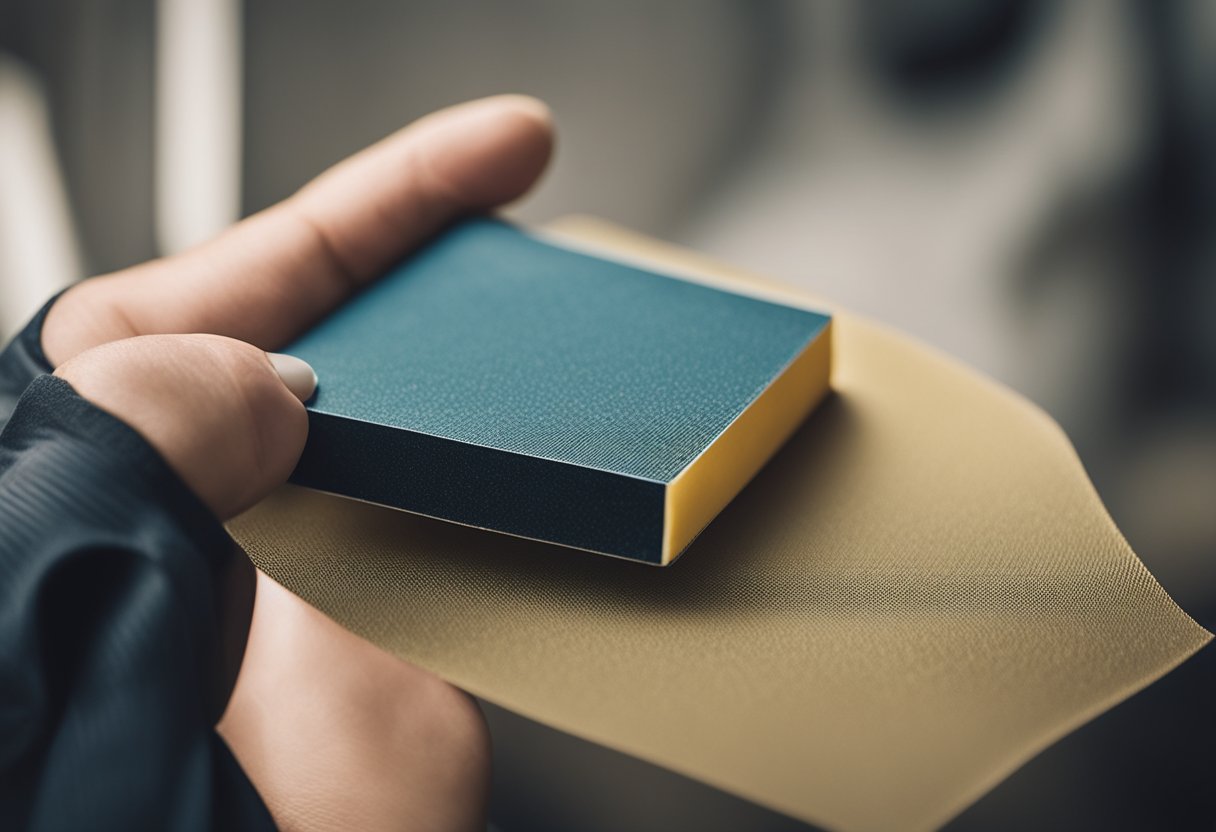
Once the paint has been dulled to your satisfaction, it’s time to fine-tune the finish. This is where you’ll focus on removing any remaining imperfections, such as swirl marks or scratches. There are several techniques you can use to fine-tune the finish, including polishing and wet sanding.
Polishing
Polishing is a technique used to remove any remaining imperfections in the finish and restore the shine to the paint. To polish the finish, you’ll need a polishing pad and a coarse polishing compound. Apply a small amount of the compound to the pad and work it into the paint using a circular motion. Be sure to work in small sections and apply even pressure to avoid creating swirl marks.
Wet Sanding
Wet sanding is another technique used to remove imperfections in the finish. To wet sand the paint, you’ll need a sanding block and wet/dry sandpaper in various grits. Start with a coarse grit sandpaper and work your way up to a finer grit. Be sure to keep the sandpaper wet to avoid creating scratches in the paint. Once you’ve sanded the paint to your satisfaction, use a polishing pad and compound to restore the shine to the finish.
Swirl Marks
Swirl marks are a common problem when polishing the finish. They are caused by using too much pressure or working in a circular motion. To avoid creating swirl marks, be sure to use even pressure and work in straight lines. If you do create swirl marks, you can remove them by using a finer polishing compound and a foam polishing pad.
In conclusion, fine-tuning the finish is an important step in achieving a flawless paint job. By using techniques like polishing and wet sanding, you can remove any imperfections and restore the shine to the paint. Just be sure to work carefully and follow the proper techniques to avoid creating new imperfections in the finish.
Final Steps and Care
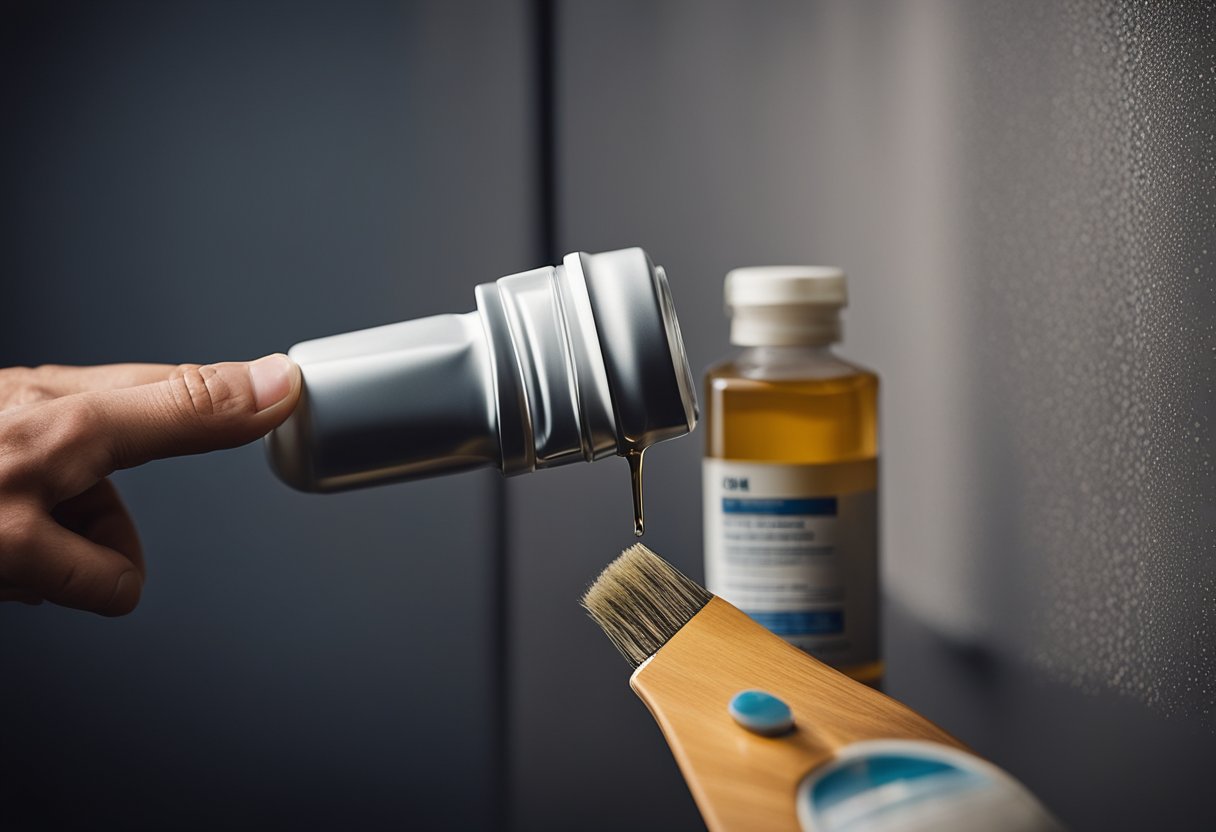
Once you have successfully dulled your glossy paint finish, it is important to take some final steps to ensure that your new finish lasts as long as possible. Here are some tips to help you care for your newly refinished surface:
-
Avoid harsh chemicals: Use gentle cleaners and avoid harsh chemicals that can damage your new finish. Satin and matte finishes are particularly susceptible to damage from harsh chemicals, so be sure to use cleaners that are specifically designed for these types of finishes.
-
Use a soft cloth: When cleaning your newly refinished surface, use a soft cloth or sponge to avoid scratching the finish. Avoid using abrasive materials like steel wool or scouring pads, which can damage the finish.
-
Apply a protective coating: To help protect your new finish, consider applying a protective coating like wax or matte varnish. These coatings can help to prevent scratches and other damage, and can also help to extend the life of your new finish.
-
Avoid direct sunlight: High-gloss furniture and other surfaces can be particularly susceptible to damage from direct sunlight. To help prevent fading and other damage, avoid placing your refinished surface in direct sunlight.
-
Refine your finish: If you are not completely satisfied with your new finish, consider refining it further. You can use sandpaper or a deglosser to further dull the finish, or you can apply another coat of paint or varnish to achieve the desired level of sheen.
-
Use wood wax: If you have refinished a wooden surface, consider using wood wax to help protect and preserve the wood. Wood wax can help to prevent cracking and other damage, and can also help to enhance the natural beauty of the wood.
By following these simple tips, you can help to ensure that your newly refinished surface looks great and lasts for years to come.
Troubleshooting Common Problems
As with any painting project, there are some common problems that can arise when trying to dull a gloss paint finish. In this section, I will address some of the most common issues and provide tips on how to troubleshoot them.
Swirl Marks
Swirl marks can be caused by using the wrong type of sandpaper or by applying too much pressure while sanding. To avoid swirl marks, use a fine-grit sandpaper and apply light pressure. If you do end up with swirl marks, you can try to remove them by buffing the surface with a polishing compound.
Etching
Etching can occur when using certain types of chemical strippers or deglossers. To avoid etching, be sure to follow the manufacturer’s instructions carefully and test the product on a small, inconspicuous area before applying it to the entire surface.
Glass Etching Cream
Glass etching cream can be a great way to dull the finish on glass surfaces, but it can also be difficult to work with. To avoid problems, be sure to wear gloves and eye protection when using the cream, and apply it in a well-ventilated area. If you do accidentally get the cream on a surface you didn’t intend to etch, you can try to remove it with a mixture of baking soda and water.
By following these tips, you can avoid some of the most common problems that can arise when trying to dull a gloss paint finish. If you do run into any issues, don’t hesitate to reach out to a professional for help.
Safety Measures
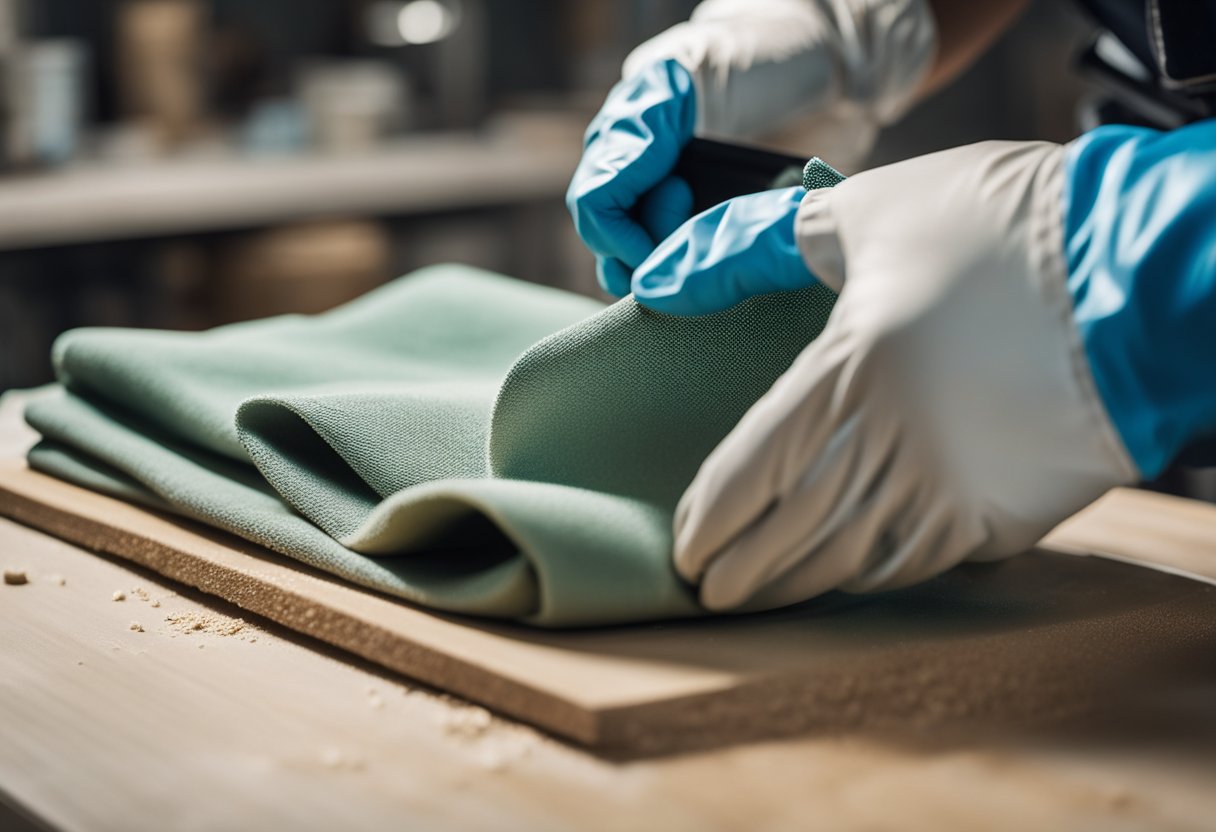
As with any DIY project, safety should be a top priority when dulling a glossy paint finish. Here are some safety measures to keep in mind before you start:
Wear Protective Gear
First and foremost, you should wear protective gear such as safety glasses, a dust mask, and a respirator. These items will protect you from dust, debris, and harmful chemicals that may be released during the process.
Work in a Well-Ventilated Area
It’s important to work in a well-ventilated area to avoid inhaling any fumes or dust. If possible, work outside or in a space with plenty of fresh air. If you’re working indoors, open windows and doors to allow for proper ventilation.
Follow the Manufacturer’s Instructions
Always follow the manufacturer’s instructions when using any chemicals or products to dull a glossy finish. Be sure to wear gloves and protective clothing, and work in a well-ventilated area. Avoid contact with skin and eyes, and keep these products out of reach of children and pets.
Clean Up Properly
After you’ve finished dulling the glossy paint finish, be sure to clean up properly. Dispose of any chemicals or products according to the manufacturer’s instructions, and clean up any dust or debris with a damp cloth or vacuum. Be sure to wash your hands and any tools or equipment you used during the process.
By following these safety measures, you can ensure that your project is completed safely and efficiently.
Frequently Asked Questions
How can I reduce the shine on high gloss paint?
If you want to reduce the shine on high gloss paint, there are a few methods you can try. One of the most common methods is to use sandpaper to dull the surface. You can start with a coarse grit sandpaper and gradually move to a finer grit until you achieve the desired level of shine. Another method is to use a chemical deglosser, which will remove the gloss from the surface without the need for sanding. You can also try using a matte varnish or paint over the glossy surface to reduce the shine.
What are some techniques to make gloss paint less shiny?
There are several techniques you can use to make gloss paint less shiny. One of the easiest methods is to mix a small amount of matte paint into the gloss paint. This will reduce the shine and give the paint a more matte finish. Another method is to apply a coat of wax or oil over the gloss paint. This will create a layer of protection over the paint and reduce the shine. You can also try sanding the surface of the paint with a fine grit sandpaper to create a more matte finish.
How do I change a gloss paint finish to a satin finish?
To change a gloss paint finish to a satin finish, you can use a few different methods. One of the most common methods is to use a chemical deglosser to remove the gloss from the surface. Once the gloss has been removed, you can apply a coat of satin paint over the surface to create a satin finish. Another method is to sand the surface of the paint with a fine grit sandpaper to create a more matte finish. Once the surface has been sanded, you can apply a coat of satin paint over the surface.
What is the process for rubbing out a high gloss finish?
Rubbing out a high gloss finish involves using a rubbing compound and a buffer to remove the gloss from the surface of the paint. To do this, you will need to apply the rubbing compound to the surface of the paint and use a buffer to buff the surface until the gloss has been removed. Once the gloss has been removed, you can apply a coat of wax or oil to protect the surface.
How do I dull a glossy finish on plastic?
To dull a glossy finish on plastic, you can use sandpaper or a chemical deglosser. If you choose to use sandpaper, make sure to use a fine grit sandpaper to avoid scratching the surface of the plastic. If you choose to use a chemical deglosser, make sure to follow the manufacturer’s instructions and use the product in a well-ventilated area.
What are some DIY methods to make paint matte?
There are several DIY methods to make paint matte. One of the easiest methods is to mix a small amount of baking soda into the paint. This will create a more matte finish. Another method is to use a flatting agent, which can be added to the paint to reduce the shine. You can also try sanding the surface of the paint with a fine grit sandpaper to create a more matte finish.

Hi, I’m Sal Muller of Tooltrip.com. My DIY experience led me to understand essential power tools for home projects. Tooltrip.com guides enthusiasts and professionals in choosing right tools for any job. I provide concise top tool reviews for easier, efficient DIY.

